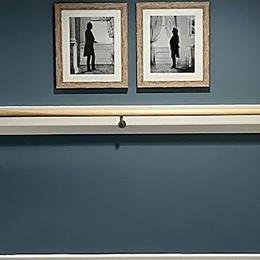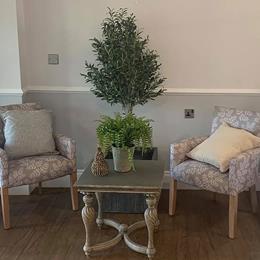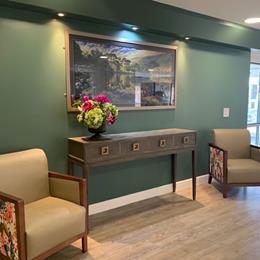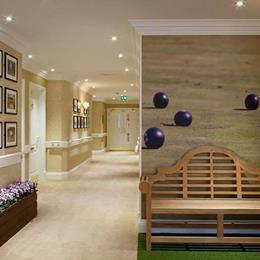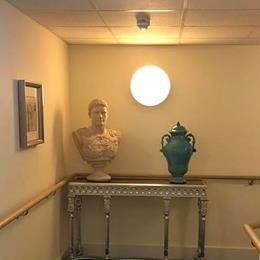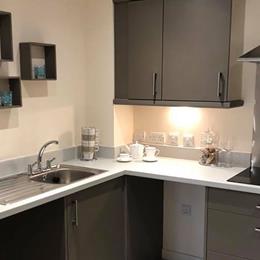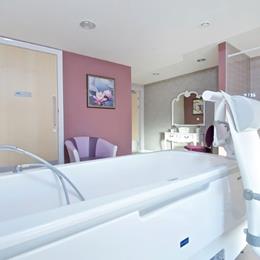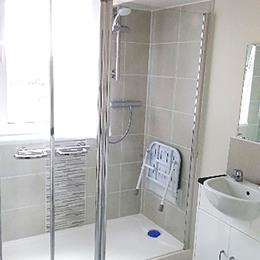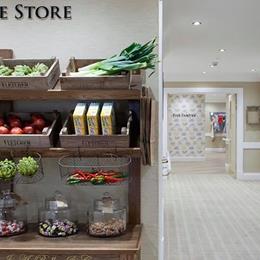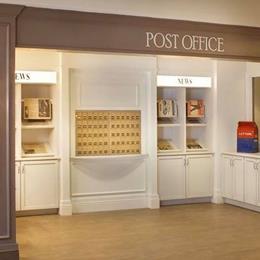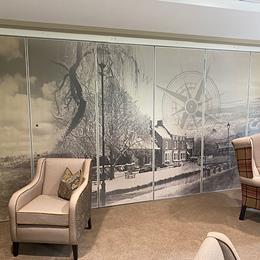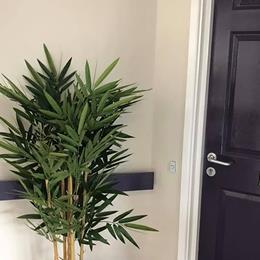Housing 21 has developed these dementia-friendly design principles to support our design led makeovers within our property portfolio.
Many of our design standards will also support residents with sight or hearing impairment. Within our schemes we have many residents living with sight impairment, dementia, Alzheimer’s and physical difficulties who rely on us to enable their independence and support their ability to navigate around the scheme. The use of colour and design in our makeovers and component replacement is essential in our role to support independence and quality of life.
Through subtle but conscious choices we can meet the needs of residents with dementia, sight impairment and physical difficulties, whilst still ensuring a pleasant welcoming ambient design and practicality within our homes.
Inspiration for this guidance has been sought from several sources; the University of Stirling, the University of Worcester and some of our partner design experts and suppliers.
Colour and Contrast
Colour and contrast can both be used to enable our residents with sight impairment and dementia to identify different rooms and key features inside and outside of their homes. Generally speaking the warmer tones of red orange and yellow are easier to identify for those with a visual impairment. Some older people with dementia or visual problems increasingly find blues, greens and purples harder to differentiate so limiting these in new design led makeovers may be helpful.
Click the images below to expand.
Lighting
Lighting is important to people with sight impairment and dementia. Good lighting can make the most of people’s capabilities and help to compensate for poor eyesight; it can assist people in finding their way around both new and familiar spaces and help them to undertake specific tasks.
Click the images below to expand.
Kitchens
Good layout and design of kitchens can make preparation of food and drink easier and facilitate independent living for people with sight impairment and dementia.
Click the image below to expand.
Bathrooms
Good bathroom design supports independence with washing, toileting and personal hygiene. Good design will also help with identification of the toilet and bathroom. People find grab rails helpful in bathrooms and these are fitted where practical or on request. Our bathroom suppliers continually develop their products and focus on residents who find washing and bathing difficult. Recent additions include standard fittings such as toilet roll holders and towel rails.
Click the images below to expand.
Reminiscence and memories
Where possible, and when the residents and court staff support it, spaces and rooms can be designed to aid reminiscence. People living with dementia may experience memory loss, but long term memories are often the last to be affected. By offering design that incorporates some of the history of the area and some artefacts from the past, we can provide some comfort and enjoyment for our residents, whilst also supporting any therapy sessions or separate activities held on court.
Click the images below to expand.
Entrances and Exits
Having well designed entrances and exits is important, not only for people with sight impairment or dementia. Within our courts all doorways will be wide enough to be easily accessible for people with different levels of mobility. Additionally, external entrances and exits should be designed to provide easy access to outdoor spaces with this clearly marked. Fire exits are also clearly marked to steer people to the quickest method of escape if required.
Click the images below to expand.

